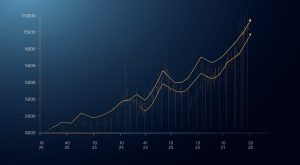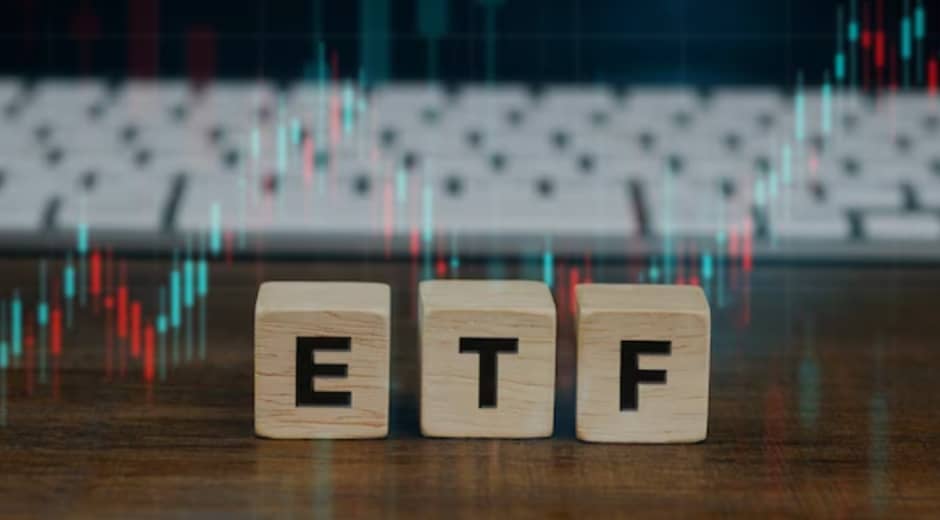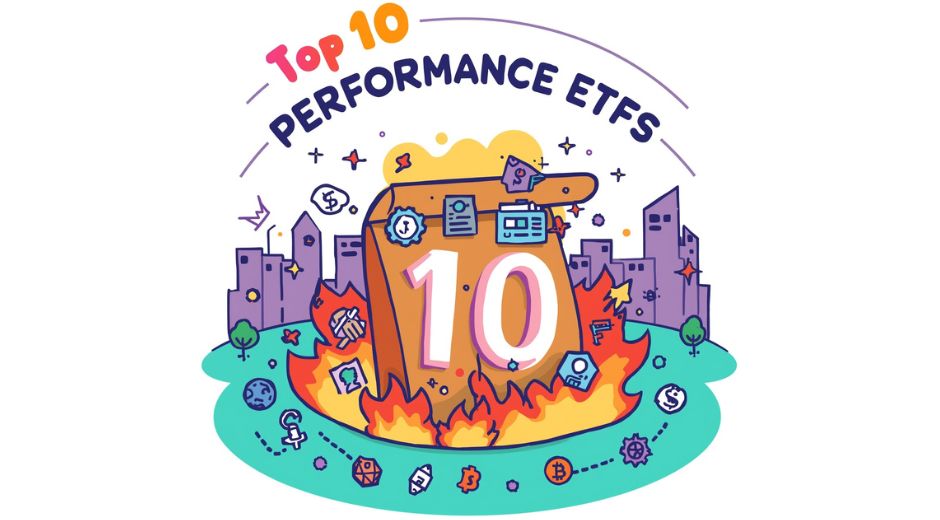Dividend ETFs in 2025: Consistent Income for a Volatile Market
In a year defined by economic fluctuations, inflationary pressure, and unpredictable growth patterns, Dividend ETFs have become a cornerstone for investors seeking stability and steady income. These funds combine the best of two worlds: the diversification of exchange-traded funds and the regular cash flow of dividend-paying stocks.
As investors navigate volatile markets in 2025, Dividend ETFs continue to stand out for their reliability, transparency, and performance resilience.
Why Dividend ETFs Are Attracting Attention
Traditional investors have long valued dividends for their consistent returns, but managing a portfolio of individual dividend stocks can be complex. Dividend ETFs simplify this process by pooling a basket of high-quality dividend-paying companies into a single, easy-to-trade product.
This diversification helps reduce risk while maintaining exposure to stable, income-generating assets. In 2025, the appeal is even stronger as global markets face uncertainty from interest rate fluctuations and geopolitical challenges.
A recent Morningstar report highlighted that global Dividend ETFs attracted over $120 billion in new inflows during the first half of 2025—a record figure underscoring investors’ preference for dependable yield over speculation.
The Mechanics of Dividend ETFs
Dividend ETFs operate much like traditional ETFs but focus specifically on companies that distribute regular dividends. They track indexes that include large-cap, mid-cap, or sector-specific dividend payers. Investors benefit from automatic diversification, liquidity, and lower costs compared to mutual funds.
Many Dividend ETFs reinvest payouts to enhance compounding over time. Others distribute earnings periodically, appealing to those seeking passive income streams, such as retirees or conservative investors.
For example, funds like the Vanguard Dividend Appreciation ETF (VIG) and iShares Select Dividend ETF (DVY) have become popular options, offering strong performance with reduced volatility.
Dividend ETFs vs. Traditional Dividend Stocks
While both aim for income generation, Dividend ETFs offer clear advantages over selecting individual dividend stocks:
-
Diversification: Spreads risk across dozens or even hundreds of companies.
-
Convenience: No need to research or rebalance individual holdings.
-
Cost Efficiency: Lower management fees compared to active dividend funds.
-
Transparency: Holdings are publicly disclosed and updated regularly.
However, there are trade-offs. Investors sacrifice some control over specific stock selection and may experience slightly lower yields due to fund expenses. Nonetheless, for most long-term strategies, the benefits outweigh the drawbacks.
How Dividend ETFs Perform in Volatile Markets
Market volatility often pushes investors toward safer assets. Dividend ETFs are particularly resilient because they prioritize companies with stable cash flows and proven business models.
Even when equity prices fall, dividends help cushion portfolio losses and provide ongoing income. Historically, dividend-paying companies have outperformed non-dividend payers during bear markets, offering both income and relative capital preservation.
In 2025, with many economies balancing between recovery and recession fears, Dividend ETFs provide a steady anchor amid uncertainty.
At FinanceWorldHub, our analysts frequently explore the performance of leading Dividend ETFs and share portfolio optimization strategies. Visit FinanceWorldHub to discover in-depth comparisons and yield projections for this year’s best-performing funds.
The Role of Interest Rates and Inflation
Interest rates and inflation have a direct impact on Dividend ETFs. Rising rates can make bond yields more attractive, but Dividend ETFs remain competitive when inflation erodes fixed-income returns.
Companies that consistently increase dividends demonstrate pricing power and strong balance sheets—two critical qualities in inflationary environments. Dividend growth ETFs, which track firms with a history of raising payouts, are especially appealing in 2025’s macroeconomic context.
By balancing yield and growth potential, Dividend ETFs continue to serve as a middle ground between equities and fixed income.
Sector Breakdown: Where the Income Flows
Dividend ETFs typically overweight sectors that generate consistent cash flows, such as:
-
Utilities: Known for stability and regulated income streams.
-
Consumer Staples: Reliable dividend contributors regardless of economic cycles.
-
Financials: Banks and insurers often reward shareholders with regular payouts.
-
Energy: Oil and gas producers benefiting from high commodity prices.
In 2025, technology is also entering the dividend conversation, with mature tech giants initiating or expanding dividend programs, further broadening ETF opportunities.
For the most current sector breakdowns and live ETF analytics, investors can check comparative insights BioNatureVista and evaluate their diversification approach with the latest data sources.
Tax Efficiency and Compounding Advantages
Dividend ETFs are generally tax-efficient compared to mutual funds due to their in-kind creation and redemption structure. Investors also benefit from reinvestment opportunities that enhance long-term compounding.
For instance, an investor who reinvests dividends quarterly can experience exponential portfolio growth over a 10-year horizon. This “snowball effect” turns passive income into accelerated capital appreciation.
Building a Balanced Portfolio
Dividend ETFs fit well in diversified portfolios. They complement growth ETFs, bonds, and international funds by offering stable cash flow. Conservative investors may even build entire portfolios around Dividend ETFs, focusing on consistent yield and low volatility.
Risk-tolerant investors, meanwhile, might combine Dividend ETFs with growth or thematic funds to achieve a blend of security and opportunity. The key is balance—ensuring that income generation doesn’t come at the expense of growth potential.
Global Expansion and Accessibility
Dividend ETFs are no longer confined to US markets. Europe and Asia have developed robust dividend indexes, attracting investors seeking regional exposure. The iShares Asia Pacific Dividend ETF and SPDR S&P Euro Dividend Aristocrats ETF, for instance, allow global diversification with local payout advantages.
With 24/7 trading and accessible platforms, global investors can now buy and hold Dividend ETFs as easily as single stocks, democratizing income investing.
Risks and Considerations
Despite their benefits, Dividend ETFs aren’t risk-free. Dividend cuts can occur during economic downturns, affecting overall yield. Sector concentration—especially in utilities or financials—can also impact performance if those industries face pressure.
Additionally, yield-focused investors should beware of chasing high payouts without evaluating sustainability. Quality matters more than quantity when it comes to dividend strategies.
Outlook for 2025 and Beyond
Analysts predict continued growth for Dividend ETFs, driven by aging populations, inflation concerns, and market volatility. As investors prioritize consistent cash flow over speculation, demand for yield-based assets will remain strong.
New ETF products are emerging, combining dividends with ESG screens or growth factors to meet evolving investor preferences. This diversification ensures Dividend ETFs remain relevant, adaptable, and aligned with future market dynamics.
Conclusion: Stability in Uncertain Times
In an era of economic unpredictability, Dividend ETFs represent calm within the storm. They offer investors a structured way to earn passive income, manage risk, and maintain long-term discipline.
By blending yield with diversification, Dividend ETFs continue to serve as a cornerstone for balanced portfolios—delivering reliability when it’s needed most. As 2025 unfolds, they stand as a testament to the enduring value of patience, prudence, and the power of compounding.
Education Made Simple

Blue Chip Stocks in 2025: Resilience, Reliability, and Real Growth
Blue Chip Stocks in 2025 remain pillars of market stability and growth, offering investors security, dividends, and consistent long-term value.

Index Funds in 2025: The Timeless Strategy Thriving in a New Financial Era
Index Funds in 2025 remain a cornerstone of smart investing, balancing simplicity, diversification, and steady returns in a volatile market environment.

Natural Gas in 2025: Balancing Energy Demand and Sustainability
Natural Gas in 2025 plays a pivotal role in global energy transition, balancing affordability, sustainability, and reliability amid evolving markets.

Tokenization in 2025: Redefining Ownership in the Digital Economy
Tokenization in 2025 transforms how assets are owned, traded, and valued, bringing transparency and liquidity to global financial systems.

Earnings Season 2025: What Investors Should Watch for in a Shifting Market
Earnings Season 2025 reveals how corporate results are shaping market confidence, guiding investors through volatility and economic transition worldwide.

Dividend ETFs in 2025: Consistent Income for a Volatile Market
Dividend ETFs in 2025 offer stability and passive income amid market uncertainty, helping investors balance risk and long-term returns effectively.












